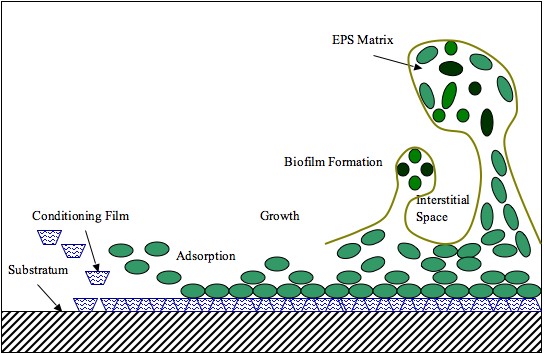|
Halomonas Anticariensis
''Halomonas anticariensis'' is a bacterium. It is strictly aerobic and because of its production of exopolysaccharide Extracellular polymeric substances (EPSs) are natural polymers of high molecular weight secreted by microorganisms into their environment. EPSs establish the functional and structural integrity of biofilms, and are considered the fundamental comp ...s forms cream-coloured, mucoid colonies. FP35T (=LMG 22089T =CECT 5854T) is the type strain. Its genome has been sequenced. References Further reading *Tahrioui, Ali. Mecanismos de comunicación intercelular en Halomonas anticariensis. Universidad de Granada, 2013. * * External links *LPSN [...More Info...] [...Related Items...] OR: [Wikipedia] [Google] [Baidu] |
Exopolysaccharide
Extracellular polymeric substances (EPSs) are natural polymers of high molecular weight secreted by microorganisms into their environment. EPSs establish the functional and structural integrity of biofilms, and are considered the fundamental component that determines the physicochemical properties of a biofilm. EPS in the matrix of biofilms provides compositional support and protection of microbial communities from the harsh environments. Components of EPS can be of different classes of polysaccharides, lipids, nucleic acids, proteins, Lipopolysaccharides, and minerals. Components EPSs are mostly composed of polysaccharides (exopolysaccharides) and proteins, but include other macromolecules such as DNA, lipids and humic substances. EPSs are the construction material of bacterial settlements and either remain attached to the cell's outer surface, or are secreted into its growth medium. These compounds are important in biofilm formation and cells' attachment to surfaces. EPSs ... [...More Info...] [...Related Items...] OR: [Wikipedia] [Google] [Baidu] |
Oceanospirillales
The Oceanospirillales are an order of Pseudomonadota with ten families. Description Bacteria in the ''Oceanospirillales'' are metabolically and morphologically diverse, with some able to grow in the presence of oxygen and others requiring an anaerobic environment. Members of the ''Oceanospirillales'' can be halotolerant or halophilic and require high salt concentrations to grow. While they grow in diverse niches, all ''Oceanospirillales'' derive their energy from the breakdown of various organic products. Bacteria in the ''Oceanospirillales'' are motile except for those in the genus ''Alcanivorax''. Bacteria in the ''Oceanospirillales'' include hydrocarbon-degrading groups such as ''Oleispira antarctica'', ''Thalassolituus oleivorans'', and ''Oleiphilus messinensis'' , which were found in the indigenous microbial community in deep waters after the Deepwater Horizon oil spill in 2010. They are also common members of bacterial communities in the water column of the hadal zone ... [...More Info...] [...Related Items...] OR: [Wikipedia] [Google] [Baidu] |
